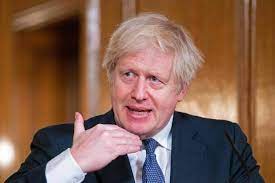Prime Minister of the UK, Boris Johnson, had a four-step plan to get Britain out of the COVID-19 emergency that had reactivated the travel market with a boom in bookings, but it does not seem to be going hand in hand with revival of tourist exchanges for now.
- The UK is closing its borders from Monday, March 29, until the end of June.
- British Airways and easyJet have suspended all summer flights to European tourist destinations.
- The traffic light system for travel is red list countries are prohibited, yellow countries require quarantine, and green list destinations require vaccination tests and/or certificates to get the go-ahead for travel.
In news of the few last hours, in fact, the UK is closing its borders from Monday, March 29, until the end of June. From that date, anyone who does not have urgent reasons for health and work cannot leave the national borders. Anyone found not complying will be fined up to 5,000 pounds.
To be signed into law and submitted to Parliament on Tuesday by the Johnson administration is the extension of emergency powers linked to the pandemic. This will be voted on this Thursday, April 1, but which is already given as a certainty. This measure comes as a blow on the anniversary of the first English lockdown, which began on March 23, 2020.
The third wave of COVID that has brought Germany to a new squeeze frightened the British government. The United Kingdom, in fact, fears that it will compromise its vaccination campaign with importation of the variants.
At the moment, those arriving from Europe have the obligation to remain in quarantine for 10 days. This could soon be extended to 14 days.
The so-called “quarantine hotels” are reserved for people in isolation, which are responsible for taking over travelers from a red list of 33 countries at highest risk under strict surveillance.
Restrictive measures – those imposed by Johnson – could also be extended in July and August with holidays allowed only in countries included in a sort of “green zone.”



